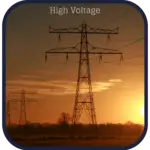Explore the apparent power equation, its significance in electrical systems, and its relationship with real and reactive power.
Understanding the Apparent Power Equation
The apparent power equation plays a critical role in the field of electrical engineering. It helps to evaluate the total power in an alternating current (AC) circuit, which consists of both real and reactive power. In this article, we will delve into the concept of apparent power and its significance in electrical systems.
Apparent Power: The Basics
Apparent power is the product of voltage and current in an AC circuit. It represents the total power in the system, encompassing both the energy that is being consumed (real power) and the energy that is being stored and released (reactive power). It is essential to consider apparent power when designing and analyzing electrical systems, as it helps engineers account for the system’s overall efficiency and capacity.
The Apparent Power Equation
The apparent power equation is defined as follows:
S = V × I *
Where S represents the apparent power (measured in volt-amperes or VA), V denotes the voltage (measured in volts), and I * is the complex conjugate of the current (measured in amperes). The complex conjugate of the current is necessary because, in an AC circuit, voltage and current waveforms can be out of phase due to the presence of inductive or capacitive elements.
Real and Reactive Power: A Closer Look
- Real power (P): Also known as active power or true power, real power is the energy consumed by the resistive elements in a circuit, like resistors and heating elements. It is measured in watts (W) and is calculated as the product of voltage, current, and the cosine of the phase angle between them (P = VIcos(θ)).
- Reactive power (Q): Reactive power is associated with the energy stored and released by inductive and capacitive elements in a circuit, such as coils and capacitors. It is measured in volt-amperes reactive (VAR) and is calculated as the product of voltage, current, and the sine of the phase angle between them (Q = VIsin(θ)).
Power Triangle and Power Factor
The relationship between apparent, real, and reactive power can be visualized in the form of a power triangle. In this right-angled triangle, the apparent power (S) is the hypotenuse, the real power (P) is the adjacent side, and the reactive power (Q) is the opposite side.
The power factor (PF) is a dimensionless number between -1 and 1 that indicates the efficiency of an electrical system. It is defined as the cosine of the angle between the voltage and current waveforms in an AC circuit. A power factor of 1 signifies that all the power in the circuit is real power, and there is no reactive power.
Conclusion
In conclusion, the apparent power equation is a vital tool for understanding and evaluating the performance of electrical systems. It allows engineers to account for both real and reactive power, ensuring the efficient design and operation of these systems.
Apparent Power Calculation Example
Let’s consider a simple example to illustrate the calculation of apparent power in an electrical system. Suppose we have an AC circuit with the following parameters:
- Voltage (V) = 120 V
- Current (I) = 10 A
- Phase angle between voltage and current (θ) = 30°
First, we need to convert the phase angle from degrees to radians:
θ = 30° × (π / 180) = π / 6 radians
Next, we can determine the complex conjugate of the current by multiplying the current by the complex exponential of the negative phase angle:
I * = I × e-jθ = 10 × e-j(π/6)
Now, we can use the apparent power equation to calculate the apparent power:
S = V × I * = 120 V × 10 × e-j(π/6) = 1200 e-j(π/6) VA
For further analysis, we can also calculate the real power (P) and reactive power (Q) in the circuit:
- Real power (P): P = VIcos(θ) = 120 V × 10 A × cos(π/6) ≈ 1039.23 W
- Reactive power (Q): Q = VIsin(θ) = 120 V × 10 A × sin(π/6) ≈ 600 VAR
In this example, the apparent power in the AC circuit is approximately 1200 e-j(π/6) VA, with a real power of 1039.23 W and a reactive power of 600 VAR.



